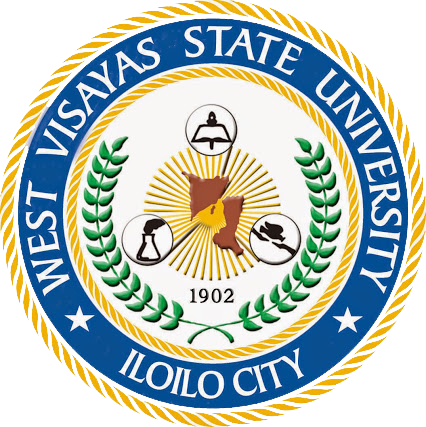| dc.contributor.advisor | Felimon, Rosemarie G. | |
| dc.contributor.author | Marquelencia, Alfonso S. | |
| dc.date.accessioned | 2023-07-10T02:02:17Z | |
| dc.date.available | 2023-07-10T02:02:17Z | |
| dc.date.issued | 2016-10 | |
| dc.identifier.citation | Marquelencia, A. S. (2016). Blended learning in probability and statistics using the analysis, design, development, implementation, and evaluation (ADDIE) model [Dissertation, West Visayas State University]. WVSU Institutional Repository and Electronic Dissertations and Theses PLUS. | en |
| dc.identifier.uri | https://hdl.handle.net/20.500.14353/294 | |
| dc.description.abstract | This developmental research that involved the one-group pretest-posttest experimental research design sought to develop an instructional model for blended learning in Probability and Statistics using the analysis, design, development, implementation, and evaluation (ADDIE) model. In the analysis stage, the student’s learning style and performance in Probability and Statistics were measured before they were exposed to blended learning. After the analysis of these results, design and development stages focused on the blended learning materials. The evaluation stage involved the measurement of experts’ evaluation, students’ satisfaction, and students’ performance post-intervention. The participants were the 43 students who were enrolled in the subject Mathematics for Grade 10 in the Laboratory School of Iloilo Science and Technology University for School year 2015-2016. The intact section was selected randomly. Descriptive data analysis included frequency count, standard deviations, ranks, and means. Inferential analysis techniques used were Wilcoxon signed ranked test and paired sample t-test. The qualitative inquiry involved the thematic analysis for the identification of themes in all answers of the students and of the experts in the evaluation form. The results revealed that 21 of the Grade 10 students are auditory learners, 18 are visual learners while 4 are kinesthetic. The developed blended learning course material contains the blended learning courseware, slide presentations, worksheets, website, and online forum at addie.tagapagkodigo.com. Furthermore, the expert's evaluation showed that the blended learning in Probability and Statistics was highly acceptable. The qualitative analysis of experts’ feedback revealed that the blended learning courseware has pedagogical richness, access to knowledge, social interactions, and ease of revision. Moreover, the students were highly satisfied with blended learning model and their responses reflected the themes of organization, satisfaction, accessibility, availability and flexibility, and structure improvement. The performance of the Grade 10 students before they were exposed to blended learning courseware was low, but after they were exposed to blended learning, an increase in their scores was noted. The difference in their performance before and after exposure to blended learning when taken as a whole and categorized according to visual and auditory was significant, but there was no significant difference in the post-intervention performance when students are categorized according to learning style. Significant difference was also noted in the student’s performance in Probability and Statistics before and after they were exposed to blended learning courseware, but there was no significant differences in their scores after they were exposed to blended learning courseware when they were categorized according to learning style. In conclusion, majority of the Grade 10 students could easily learn through listening; that is, most of them were inclined to remember spoken words. Moreover, the experts’ rating of the acceptability of blended learning showed that the developed model may be implemented to complement the existing K to 12 Curriculum. Furthermore, the student’s satisfaction with the courseware seemed to indicate that the Grade 10 students like to interact with their fellow learners through blended learning as manifested by their high scores. From the findings of the open-ended questions, on the other hand, it appeared that blended learning method is more exciting and fosters independent learning among students. Hence, it is recommended that using the blended learning course material be used in schools as it has tremendous impact on student’s performance in Probability and Statistics. It is important, however, that computers and internet services should be available in the school and are made accessible to the students. Government agencies such as the Department of Science and Technology (DOST) and Technical Education and Skills Development Authority (TESDA) may also initiate coaching the Basic Education teachers on how to use the material while State Universities and Colleges (SUCs) should train their faculty members to maximize the availability of the modern technology at hand. | en |
| dc.format.extent | xviii, 232 p. : ill. (col.). | en |
| dc.language.iso | en | en |
| dc.publisher | West Visayas State University | en |
| dc.subject | Blended learning | en |
| dc.subject | Probability and statistics | en |
| dc.subject | Analysis, design, development, implementation and evaluation (ADDIE) | en |
| dc.subject | Laboratory School of Science and Technology University | en |
| dc.subject | Students' performance | en |
| dc.subject | Developmental research | en |
| dc.subject.lcsh | Blended learning | en |
| dc.subject.lcsh | Probability and mathematical statistics | en |
| dc.title | Blended learning in probability and statistics using the analysis, design , development, implementation, and evaluation (ADDIE) model | en |
| dc.type | Dissertation | en |
| dcterms.accessRights | Limited public access | en |
| thesis.degree.discipline | Mathematics | en |
| thesis.degree.grantor | West Visayas State University | en |
| thesis.degree.level | Doctoral | en |
| thesis.degree.name | Doctor of Philosophy in Science Education (Mathematics) | en |
| dc.contributor.chair | Arellano, Elvira L. | |
| dc.contributor.committeemember | Palomo, Emellie G. | |
| dc.contributor.committeemember | Belarga, Alona M. | |
| dc.contributor.committeemember | Lagon, Herman M. | |






